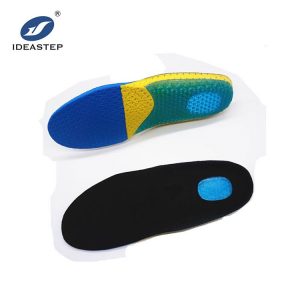
Several materials are suitable for running insoles, depending on the specific needs and preferences of the runner. Here are some commonly used materials for running insoles:
1. EVA (Ethylene-vinyl acetate)
EVA is a lightweight and flexible foam material that provides cushioning and shock absorption. It offers good support and helps reduce the impact on joints during running.
2. Gel
Gel insoles often have gel pockets or inserts strategically placed in high-impact areas to provide additional cushioning and shock absorption. Gel insoles can help alleviate discomfort and enhance comfort during running.
3. Memory foam
Memory foam conforms to the shape of the foot, providing customized support and pressure relief. It absorbs shock and distributes weight evenly, promoting comfort and reducing fatigue during running.
4. Polyurethane (PU) foam
PU foam is durable, and resilient, and offers excellent shock absorption properties. It provides stable cushioning and support for runners, helping to reduce the risk of injuries caused by repetitive impact.
5. Carbon fiber
Carbon fiber insoles provide superior stability and support. They are lightweight, rigid, and help control excessive foot motion during running, which can be beneficial for runners with specific biomechanical issues.
6. Arch-supporting materials
Insoles designed specifically for arch support may use materials like thermoplastic or composite materials to provide structured support to the arches of the feet. These materials can help alleviate pain and prevent overpronation or supination during running.
Ultimately, the choice of material for running insoles depends on various factors such as foot type, running style, level of cushioning desired, and any specific foot conditions or concerns. It is recommended to try different materials and consult with a podiatrist or footwear specialist to determine the most suitable material for your individual needs.
Related product links: https://www.aideastep.com/product/running-insoles-arch-support-insoles/.
